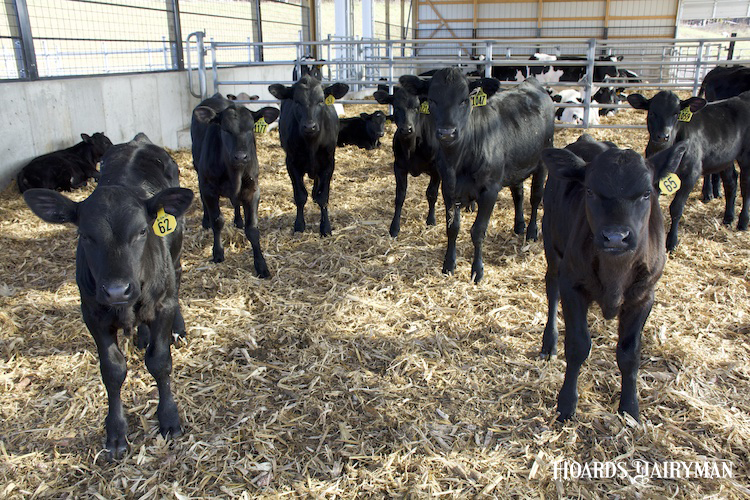
University of Wisconsin Division of Extension educators surveyed 40 dairy farms that use beef sires to breed dairy females. The farms varied in size from 19 cows to 7,414 cows, with an average herd size of 454 lactating cows. Average milk production was 89 pounds per cow per day. Regional Extension Dairy Educator Ryan Sterry shared the recently released results of this survey during a Badger Dairy Insight webinar.
Sterry explained that culling rate is an important factor that influences herd dynamics and replacement heifer needs. The median culling rate for lactating cows on these farms was 30%, while the median culling rate for heifers prior to calving was 5%.
Farms in this survey had been using beef sires from two to 20 years. When asked what criteria were used to select the number of cows and heifers bred to beef bulls, the need for dairy heifer replacements was chosen most frequently, followed by beef-dairy crossbred calf prices. The data used most often to determine replacement needs was cow culling rates, heifer culling rates, and pregnancy rates.
As for factors used to determine which animals to breed to beef, 64.3% of respondents ranked the number of services or poor fertility as their first or second criteria. Parent Average PTA was the first or second criteria for 41.9% of farms. The animal’s genomic PTA was the first or second reason for 35.7% of farms, while lactation number was a top two factor for 28.9% of the herds.
Angus was the beef breed used most often among these farms. Following behind more distantly were Simmental, Limousin, and SimmentalxAngus crosses. Wagyu, Charolais, Herford, and LimousinxAngus were also used.
Half of the farms (21) said that their A.I. representative selected the beef sires used on the farm. The farm owner or manager chose the beef sires for 16 herds. On two farms, their calf buyer selected the sires to be used, and one farm had a consultant who made beef sire decisions.
The traits that led sire selection for these farms were conception rate, calving ease, and cost. Some of the dairies included feedlot and carcass performance traits, but according to the responses, these traits were not priorities for most of the farms. “We still have some opportunities here to emphasize these traits to breed a better crossbred animal,” Sterry noted.
The price paid for beef semen on these farms ranged from $1.40 to $30 per straw, for an average of $10. That compared to an average price of $18 per straw of conventional dairy semen and $31 per dose of sexed dairy semen.
Heifers were bred an average of 2.9 times before switching to beef semen. For cows, that number was 2.3.
On these farms, on average, they were breeding 58% of heifers to gender-sorted semen; 23% to conventional dairy semen; and 18% to beef semen.
In the cows, beef semen was used more heavily. In first lactation cows, 41.6% were bred to beef semen; 31.7% to conventional dairy semen; and 26.6% to gender-sorted semen. In the cows second lactation or older, 60.4% were bred to beef semen. Another 29.5% were bred to conventional dairy semen, and just 10.2% were bred to gender-sorted semen.
When it comes to the calves, 65% of the farms were selling them within the first week of age. About 10% sold them at 1 to 2 weeks of age, 2.5% sold between 2 and 8 weeks, and 10% sold them between 8 weeks and a year old. Five of the farms in this survey were finishing out their crossbred calves. The majority of animals were sold either though auction or direct private sales, while a few farms were participating in a contract program.
These results highlight how some farmers are utilizing beef sires in their dairy herds. With a continued emphasis on cow longevity and raising fewer heifers to reduce rearing costs, it seems likely that dairies will continue down this road of producing crossbred calves.








